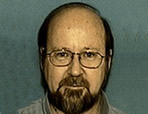 In Panmedia's early days we were close to Robert Lancashire, then a senior lecturer in chemistry at the University of the West Indies, Mona. His keen interest in the Internet perhaps surpassed ours. By 1994, he had created the Caribbean’s first website (http://wwwchem.uwimona.edu.jm), which still is an extensive chemical education resource. Notice there is no period after the WWW.
In Panmedia's early days we were close to Robert Lancashire, then a senior lecturer in chemistry at the University of the West Indies, Mona. His keen interest in the Internet perhaps surpassed ours. By 1994, he had created the Caribbean’s first website (http://wwwchem.uwimona.edu.jm), which still is an extensive chemical education resource. Notice there is no period after the WWW.
Students and lecturers around the world use his chemistry department site because his course material and other rich chemical data are available online. The site now gets about 7,000 hits a day.
From the start, Bob wanted functionality on the site, so he began experimenting with a browser plug-in to manipulate chemical molecular and spectroscopic data online. In the late 1990s, he and others in the chemistry department sold the plug in to MDL Information Systems (now part of Symyx) a leader in discovery informatics for the life sciences and chemistry. To date, more than two million visitors have downloaded MDL CHIME.
Bob was curious about Panmedia’s commercial web development in the mid 1990s, and often lent his expertise. We visited both his site and his office for ideas and advice. By then he had changed the major focus of his research from classical inorganic chemistry to the application of computers in chemistry.
According to the department, his current research applies modern computer methods with personal computers and the Internet to help the delivery of chemical information.
We were happy at the news earlier this year that he was made a professor. So this week we couldn’t miss his Inaugural Lecture “Visualization of Chemistry and developing the power of the Internet.â€
It showed his wide range of interest and his incisive mind. In his usual affable way, Professor Lancashire enthralled what at UWI was a sizable audience with a multi media presentation of flashbacks and great humour.Â
We learned that the Australian born came here on a Jamaica Producers boat, and that the late author John Hearne was a passenger on that trip. He treated us to a brief history of the computer’s early role at UWI Mona. The university got its first “computerâ€, a differential analyzer, in 1953. The physics department used it for calculations of cosmic radiation hitting the earth. It took up an entire room, and when the mathematics department needed the space for something else, the machine was dismantled.
Later, when there was an opportunity to get funding for another computer, from the Organisation of American States, the differential analyzer had to be re-assembled to show the university had computer experience.
He offered many other fun facts, like a Radio Shack TRS-80 for the university coming into the country in the diplomatic pouch of the Australian High Commission. He talked about the first network on the campus, for the Student Record System, and the first fibre optic ring around the campus (1994).
Professor Lancashire realized early that the content on his site should both be chemistry relevant and interesting to visitors. So he made it the best place to find hard scientific information about most Jamaican fruits and vegetables. For instance, a visitor can find the flavour constituents in our roasted coffee aroma, or what makes the colour in mangoes.
In 2006, he released the Java software project JSpecView as Open Source. It is now part of the chemistry search engine, ChemSpider, which has a database of more than 20 million chemicals.
He is writing a book on the History of the Department of Chemistry (with Professor Emeritus K.E. Magnus, who we see walking most mornings in Hope Gardens). Professor Lancashire is also researching the life of Edward Turner, the first Professor of Chemistry at the University of London, who was born in Clarendon, Jamaica in 1796.
As much as we enjoyed the lecture, our real clue that this was the day’s premier event came when we spotted two gentlemen in the audience who participate in everything that happens in Kingston. It’s an indication that Professor Lancashire hasn’t escaped the notice of the most discerning.
